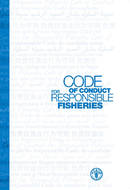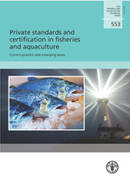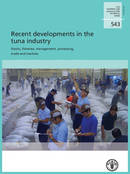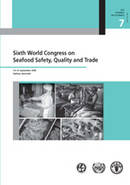Publicaciones
More than 46 percent of the total global aquaculture production in 2008 was dependent upon the supply of external feed inputs. For the aquaculture sector to maintain its current average growth rate of 8 to 10 percent per year to 2025, the supply of nutrient and feed inputs will have to grow at a similar rate. This had been readily attainable when the industry was young. It may not be the case anymore as the...
Fisheries, including aquaculture, provide a vital source of food, employment, recreation, trade and economic well-being for people throughout the world, both for present and future generations and should therefore be conducted in a responsible manner.
To promote long-term sustainable fisheries, in 1995 the FAO Conference adopted the FAO Code of Conduct for Responsible Fisheries.Afterwards, in 2011, FAO published the Code of Conduct for Responsible Fisheries - Special Edition. This special edition of the Code of Conduct for Responsible Fisheries...
FAO Fisheries and Aquaculture Technical Paper No. 553 - Private standards and related certification schemes are becoming significant features of international fish trade and marketing.
Private standards and related certification schemes are becoming significant features of international fish trade and marketing. They have emerged in areas where there is a perception that public regulatory frameworks are not achieving the desired outcomes, such as sustainability and responsible fisheries management. Their use is also becoming more common in...
he first half of the paper introduces the conditions under which the studies were made and the data sources. It first provides caveats and assumptions which are designed to prevent misunderstanding or misinterpretation when using the data. It then reviews the world tuna stock status based on the results of Regional Fisheries Management Organizations (RFMOs) scientific reviews. Even though the biomass of most of the world’s tuna stocks is generally above but close to the...
Fish and fish products are among the most traded food commodities: close to 40 percent by volume ends up in international markets. About half of those exports by value originate in developing countries.
Sixth World Congress on Seafood Safety, Quality and Trade. Sydney, Australia,14–16 September 2005. Edited byDavid JamesConsultantFAO Fisheries and Aquaculture DepartmentLahsen AbabouchChiefFish Utilization and Marketing ServiceFAO Fisheries and Aquaculture DepartmentandSally WashingtonConsultantFAO Fisheries and Aquaculture DepartmentFAO Fisheries Proceedings






